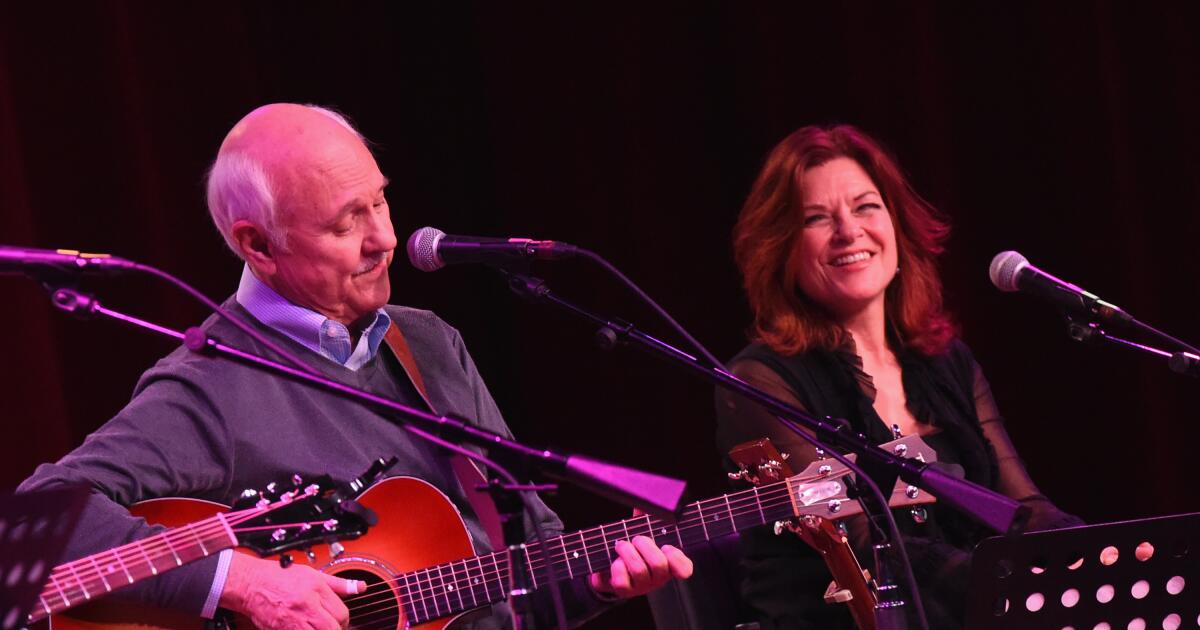MAGA wants an ‘All American’ Bad Bunny alternative. Donations welcome.
Remember when snack choices fueled the most contentious debates around Super Bowl halftime? Cheetos versus Doritos. Hot wings versus garlic knots. And who the hell brought carrot sticks?!
Now Turning Point USA, the far-right organization founded by slain MAGA activist Charlie Kirk, has presented its followers with more tough choices: Who should play at Super Bowl LX’s halftime show?
Never mind that the NFL already announced earlier this month that Puerto Rican superstar Bad Bunny had landed the spot. Turning Point USA announced Thursday that it would be staging its own counterprogramming in protest of the league’s choice. It’ll be called “The All American Halftime Show” — and it most certainly won’t be in Spanish.
Ever since the NFL announced that Bad Bunny (whose real name is Benito Antonio Martinez Ocasio) would play the Big Game on Feb. 8 at Levi’s Stadium in Santa Clara, critics have been decrying the decision as an assault on Americanism.
House Speaker Mike Johnson said booking Bad Bunny was “a terrible decision.”
President Trump, who admitted he’d never heard of Bad Bunny before the late September Super Bowl announcement, said the NFL’s booking of the performer was “absolutely ridiculous.”
White House advisor Corey Lewandowski said it was “shameful they’ve decided to pick somebody who seems to hate America so much.”
Yet in comparison with other artists and celebrities who’ve widely criticized the president and his policies, Bad Bunny is not all that political or outspoken. He has, however, expressed concerns about the potential of U.S. Immigration and Customs Enforcement detaining fans at his concerts. The artist said last month that he would not book any U.S. dates for his tour over fears that fans would be swept up by ICE. “There was the issue of — like, f— ICE could be outside [my concert]. And it’s something that we were talking about and very concerned about,” he told i-D magazine.
That was enough to deem Bad Bunny an enemy of the MAGA state and to characterize his Super Bowl show as part of a larger, hostile Latino invasion.
But let’s call it what it is: politicians and their pundits leveraging Hispanophobia for votes, influence and donations. The performer represents a population that’s been targeted by the current administration via unconstitutional sweeps of brown people in American cities, regardless of their immigration status. Bad Bunny is a U.S. citizen, like many of the folks with no criminal records who’ve been detained and even deported. Vilifying the artist and those who look and speak like him has generated votes for the right and deflected from concerns about the fragile economy and skyrocketing cost of living under Trump.
Turning Point advertises its planned counterprogramming as a show “Celebrating Faith, Family, & Freedom” and asking followers to weigh in on music genres they would like to hear at the alternative halftime show. The first option on the ballot? “Anything in English.”
The survey is situated right under a donate button, and another option to click “yes” to approve receiving “recurring automated promotional & fundraising texts from Turning Point.”
Despite the fact that the 79-year-old president had never heard of the wildly popular artist before, Bad Bunny is a three-time Grammy Award winner, a global superstar and has bested Taylor Swift’s Billboard chart numbers in the U.S.
So who does MAGA think it can get to upstage Bad Bunny at its unofficial Super Bowl side show? House Speaker Johnson suggested that “God Bless the USA” singer Lee Greenwood would attract a “broader audience.” But as Variety pointed out, the 1980s country icon boasts fewer than 500,000 Spotify listeners, compared with Bad Bunny’s 80 million.
Turning Point USA appears to be working on that problem. “Performers and event details coming soon,” said a statement on its site.
During his “Saturday Night Live” guest appearance last weekend, Bad Bunny derided the MAGA freakout around his forthcoming Super Bowl show, delivering his monologue in Spanish. He earnestly thanked his fans for acknowledging the contributions of Latinos in the U.S. Then in closing, he switched to English: “If you didn’t understand what I just said, you have four months to learn.”
No word yet if chips, salsa and guacamole will become the next target of performative, fundraising outrage on the right. Make Pretzels Great Again.

